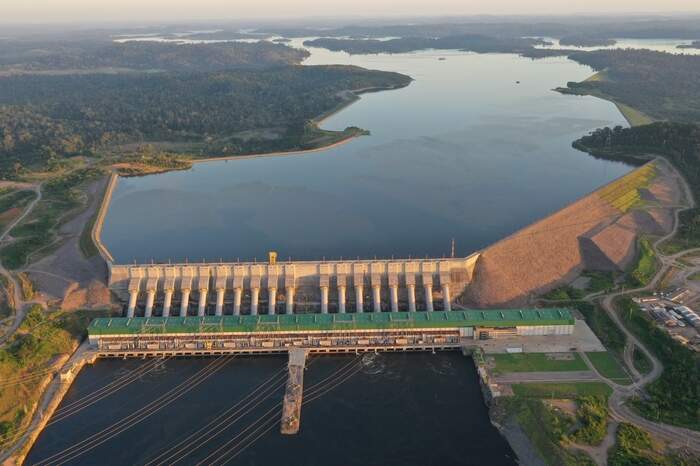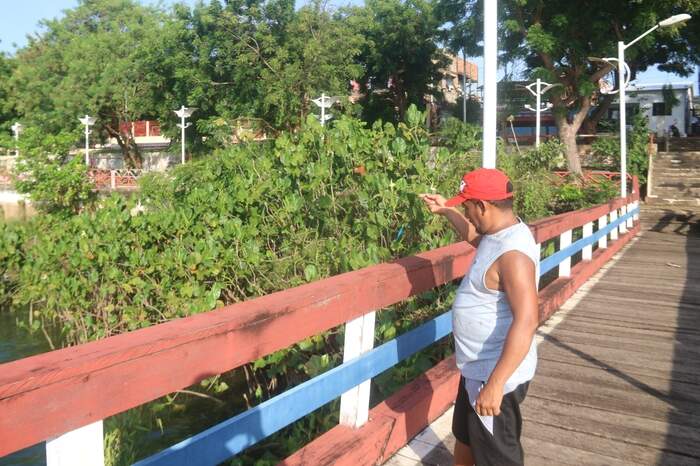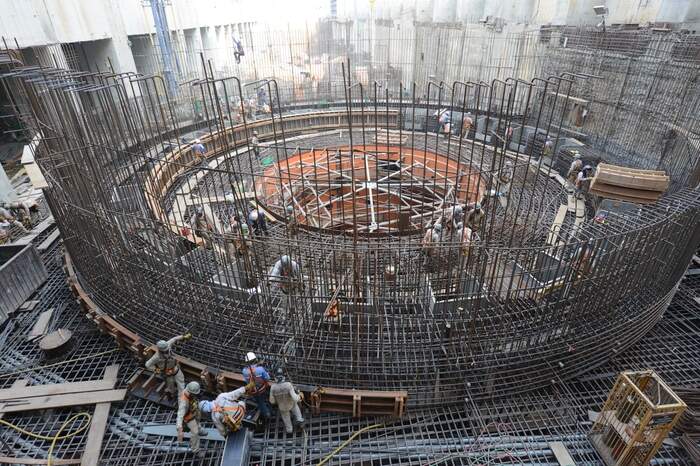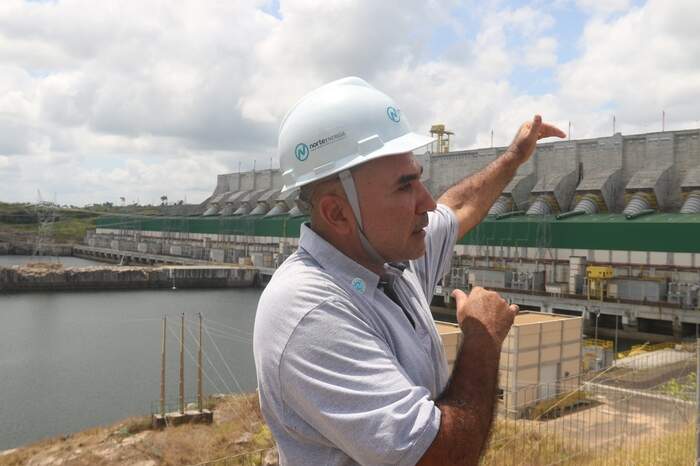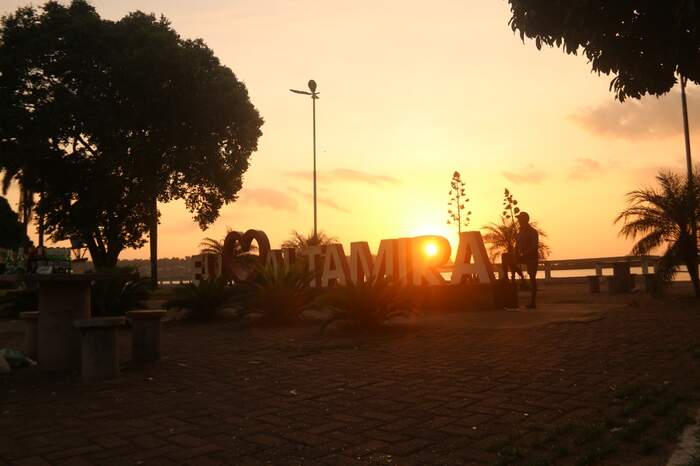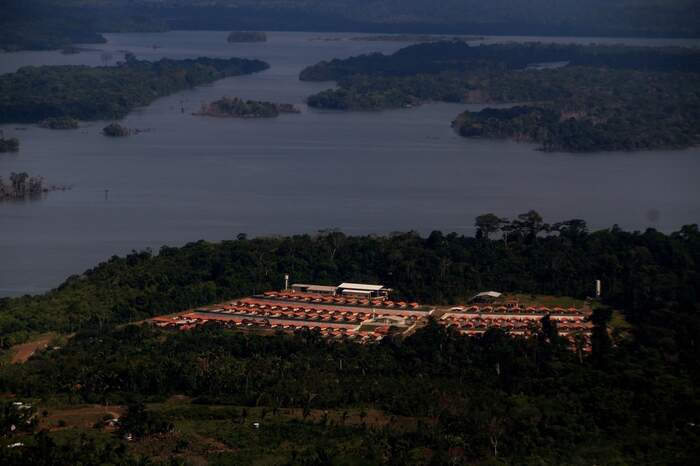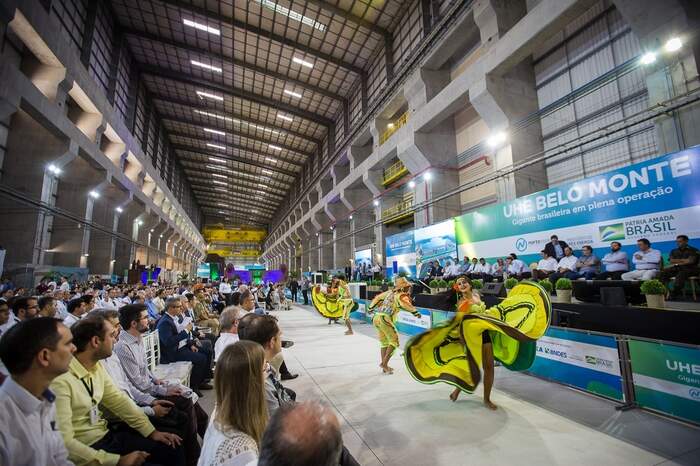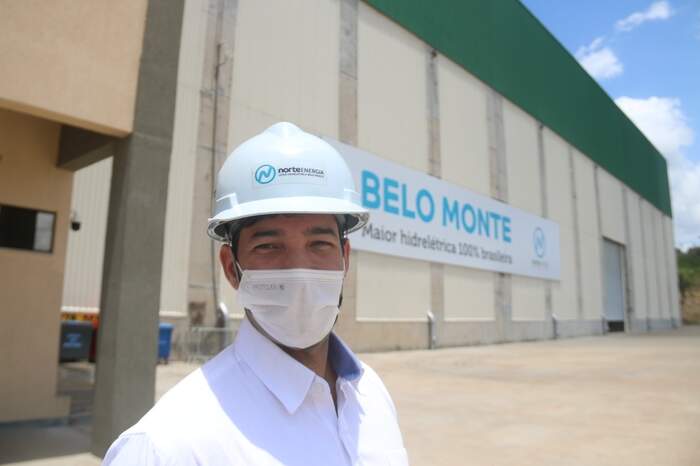Belo Monte power plant turns 10 years old . See the impacts of the project to the Xingu region
The hydroelectric plant changed the customs, routine, environment and intentions of the residents of Volta Grande do Xingu
After more than 35 years of negotiations and studies, in June 2011, the Instituto Brasileiro do Meio Ambiente e dos Recursos Naturais Renováveis [Brazilian Institute for the Environment and Renewable Natural Resources] – IBAMA, issued an Installation License, which allowed the Norte Energia company to start the construction work of the hydroelectric power plant of Belo Monte. Immediately, services were launched, profoundly affecting and reshaping the life in Volta Grande do Xingu region. Out of the municipalities comprehended by the so-called Área de Influência Direta [Area of Direct Influence] -AID, Anapu, Brasil Novo, Senador José Porfírio, Vitória do Xingu and Altamira – the latter was that which underwent the greatest impacts ensuing from the establishment of this large project, as it has always been granted a central status - the region's hub - and the city which most welcomed the contracted workers for the Belo Monte project.
Listen to the comment on this news:
As one walks along the streets of Altamira, it is very unlikely to find a single person whose life has not been transformed in the last decade by the existence of the construction project that prides itself on being “the largest 100% Brazilian hydroelectric plant”. A mosaic of the most diverse accents makes up the speech of the current inhabitants of the place. Drugstore and gas station attendants, photographers, Bank clerks and, of course, employees of the energy sector were some of those who came to consider themselves local dwellers from Altamira in recent years, as they remained in the city even after the works in Belo Monte were concluded.
“In a party, you wouldn’t recognize anyone. Everyone was new”, comments Wilson Rodrigues, who has lived in the city for 50 years and eye witnessed the population growth and evacuation movement as a consequence of the Belo Monte project’s instauration and conclusion. However, nothing has gone back to its place or to being the same as before. The last census in 2010, revealed a population of 99,075 people in Altamira.
According to the Norte Energia Company, the most significant population growth rate in the city occurred in December 2014, when it reached 140,808 inhabitants. In June 2015, this contingent began to decrease, coinciding with the period of the construction completion in Belo Monte. It was then, that the first major process of demobilizing workers began. Today, the Instituto Brasileiro de Gografia Estatística [Brazilian Institute of Geography and Statistics] - IBGE estimates that this number has reached 117,320, an increase by 18.4% compared to the period prior to the works. As an inevitable consequence, the city previously known for its agricultural profile, started to face the dilemmas inherent in the choice of becoming a major a construction site for one of the largest projects in the country.
“Look! it was on TV! We could see on the news here. At the time of the construction of Belo Monte, Altamira was considered the most violent city in Brazil, but I don't agree with that” says the 48-year-old dockworker Carlos Santos, popularly known as Roberto, the man who left the Sacramenta neighborhood in Belém to try a better life in Altamira exactly ten years ago.
In Belém, he has left his ex-wife and two children. Nowadays, the family has grown larger with a new spouse and a two- year-old son born in Altamira. When Roberto arrived at the Xingu region, he used to deliver food to the employees working at the hydroelectric. “We delivered food at all working sites: Belo Monte, the main one, and Pimental. It was real large area under our care. We did need many people to account for that delivering task”, he explains. When the Hydroelectric was finished, he decided to remain in the city, enchanted by the life by the Xingu River. “In Belém it’s more violent. Here, life is smooth. At that time, there were lots of jobs, I used to make good money. Now it stopped for a while, but it's still better than Belém for me, here” says the man, who had just caught a fat tucunaré early in that morning on the edge of town.
In addition to the life changes revealed by the new residents in Altamira, the plant also impacted the lives of those who were born and lived there before. Natália Nascimento, an environmental engineer graduated from Universidade do Estado do Pará [University of the State of Pará] – UEPA, who works in the department of social and environmental projects for the company that manages the enterprise project, says she can no longer imagine the city without the changes brought about by Belo Monte. She started at Norte Energia in 2015, as an intern and, in the following year, she joined the permanent staff.
“What has changed here were employment opportunities. Several colleagues who studied with me were able to work on different projects. In addition to the structural change in the city, there was a change in the quality of life itself”, says the young lady, who reinforces how the evolution of services in the city was the most important point for her, as she began her professional life. “Here, in the region, we don't have many qualification opportunities and we don't have a very well-structured university campus to offer all the professional opportunities that exist in the market in this region. Working here has helped me to develop skills and abilities”, comments Natália.
Rivers in Pará generate energy for the whole country
According to Agência Nacional de Energia Elétrica [National Electric Energy Agency] – ANEEL, in Brazil, 67% of the energy generated in the country in 2021 and 62.48% of the installed power comes from plants powered by the force of rivers. The country has 739 hydroelectric generating and operating plants, 425 small hydroelectric stations and 219 hydroelectric plants, which are responsible for 109.3 gigawatts (GW) of the installed capacity in operation. Three of the plants in the country are among the ten largest ones in the whole planet, namely, Itaipu (binational plant, with a capacity of 14,000 MW, divided between Brazil and Paraguay), Belo Monte (11,233 MW) and Tucuruí (8,370 MW). In 2020, the energy generated in Brazil from hydraulic sources was 415,483 gigawatt-hour (GWh).
Having the status of “the largest 100% national hydroelectric plant” placed Belo Monte at the center of expectations not only of the population of the state of Pará, but also of Brazilians in general, especially in a period of energy crisis and significant increases in power bills. In 2021, the Ministry of Mines and Energy launched a campaign to encourage the saving of resources such as water and electricity. At the beginning of September, the reservoirs in the Southeast/Midwest system, responsible for the generation of 70% of the country's energy, were operating at scarce 19.59% of their capacity. This week, the National Electric System Operator presented to Empresa Brasileira de Comunicação [Brazilian Media Company] - EBC, the numbers of the worst water crisis in the past 91 years of Brazilian river basins monitoring.
As said by the operation superintendent of the Belo Monte Complex, Sandro Deivis dos Santos, today, the project helps to balance energy production for the country, especially when the other hydroelectric plants present problems, as it is happening now. “Today, Belo Monte, with a capacity of 11,233 MW of installed power, corresponds to 12% of the Brazilian demand, and this also represents 7% of the hydroelectric power generation in the entire country. Belo Monte added greater security in supply, especially in a period of high flow and large production capacity. Belo Monte generates electricity for the other [reservoirs in Brazil] to preserve the water and use it in the dry periods”, explains the person in charge.
Also, according to Deivis, since August 4, only one of the 18 turbines at Belo Monte's main plant has been operating per day, due to the hydric conditions of the Xingu River itself. “We are facing a drought period in the North region, and this scenario was already expected. The average power is now 255 MW, and this situation is expected to remain unchanged until the beginning of our wet season, around mid-November. This capacity is compatible with the conditions of the Xingu River at the moment. We are simply releasing the water that is coming to the river. “If little water comes in, the preservation of the reservoir level demands that little water be released”, he explains.
According to Norte Energia, this management of energy generation flow results from decades of studies, which caused Belo Monte to be redesigned as to reduce the size of its reservoir, thus, ensuring that no indigenous land was flooded. The plant became ‘a run of the river’ model, operating practically with the flow of water from the Xingu River, with two reservoirs, designed to try to minimize impacts. The UHE Belo Monte possesses18 turbines, with a power of 611.11 MW each. The complementary powerhouse (UHE Pimental) has 6 turbines, with 38.85 MW of capacity in each unit, totaling 11,233 MW. Belo Monte operates in 200 km considering the more than 1,800 km of the Xingu.
“A run of the river plant does not have the capacity to store large volumes. The water that comes in, is released in the same proportion. You have a main reservoir, with 359 km², and a 20 km channel that diverts water from the main reservoir to the intermediary, which is 119 km². In this moment, water is returned to the river. This system was built up to the Xingu River, in order to return the water collected back there, in Pimental, to the river”, says Sandro Deivis.
According to the superintendent, this model adopted in Belo Monte was designed to contribute to the national system in the wet season, when there is an intense flow, and it is possible to use the power generation so that other reservoirs can save water to be released in the dry season. “By the end of the year, when water starts to flow into the Xingu River, Belo Monte will be used by the national operator as much as the water level allows us to. That way, we will be able to produce energy to Brazil”, foresees Sandro Deivis.
Social improvements with quality of life versus negative impacts
When the decision was made to build Belo Monte in the Xingu region, some compensatory measures were taken – an attempt to balance the potential impacts that any project of this magnitude is bound to provoke to the region's residents and the environment as well. When getting to Altamira, anyone can spot the big changes in the urbanization of the city. The edge of the municipality, once taken over by stilts houses, has now a perennial beach, which is a popular leisure site for the local population on weekends.
People who lived in these regions were relocated to planned neighborhoods, called Reassentamentos Urbanos Coletivos [Collective Urban Resettlements] – RUCs. In all, six of these spaces were created, with 3,850 new residences built. They are: Jatobá, São Joaquim, Casa Nova, Laranjeiras and Água Azul. The sixth neighborhood, called Tavaquara, must be concluded soon, and destined for families of urban indigenous people, fishermen and riverside dwellers, people who already lived in the other resettlements, and will soon inhabit a place with easier access to the Xingu River, thus, being able to preserve their tradition practices.
Jorgemir Santos, a 43-year-old man and current president of the Association of Families Living in the Jatobá Neighborhood (Afaja), tells us he has been living at RUC for five years. “I was one of the last people removed, I lived in the old Rua do Ferro Velho, on the banks of the Altamira creek. I lived there for 20 years. Since then, some things have improved. Here, the infrastructure is that of a planned neighborhood, offering sports facilities and education, with schools nearby. It's organized, and there, it was not. It was like a land invasion”, says the resident, who also presents the other side. “Our difficulty today is the distance from the city center. There, we used to live downtown, and now this is a drawback”, says “Mica” when weighing the positive and negative points.
For Professor Marcel Padinha, from Universidade Federal do Pará [Federal University of Pará] - UFPA, this crisis involving the ‘sense of belonging’ brought about by the relocation of families is just one of the problems he listed in his doctoral thesis, a work that was awarded as the best thesis in the area of Human Geography in the years 2017 and 2018 by the National Association of Graduate Studies in Geography. “When a hydroelectric plant is built in the Amazon, it is not necessarily the local interest and demands that is on the agenda. In the case of Belo Monte, the restructuring of the territory was almost complete”, highlights the professor.
According to his study, around 40,000 people were displaced on account of Belo Monte, considering the countryside and the city. “They used to live in the center of Altamira, and today, most RUCs are far away. I've heard this complaint quite often in my interviews ‘the house is better, but if I could, I'd choose my previous life’. They were people from the outskirts of the city, but who worked in the center, or fishermen who had their lives changed”, says the professor, who came to the conclusion that the relocation process provoked social, financial and even emotional damage to people.
The professor makes a point recollecting facts from 2017, when Altamira was identified as the most violent municipality in Brazil, according to the Atlas da Violência do Instituto de Pesquisa Econômica Aplicada [Atlas of Violence of the Institute for Applied Economic Research] – IPEA. This mapping was accomplished in partnership with the Fórum Brasileiro de Segurança Pública [Brazilian Forum on Public Security]. Records pointed to 107 violent deaths per 100,000 inhabitants. The study, itself, attributes this number to the population growth during the period of Belo Monte construction project. “If you ask me to classify Belo Monte in a few words, I would choose two: complex and violent”, says Professor Marcel Padinha.
On the other hand, Norte Energia highlights the advances promoted by Belo Monte to the region, and highlights the investments made to improve the lives of those who lived there. Bruno Bahiana, manager of Social and Environmental Monitoring, mentions positive projects such as the construction of schools, basic health units and investments in basic sanitation in the region. Altogether, R$6.3 billion were invested in these types of actions, with approximately R$796 million in projects aimed at 4,493 indigenous people.
“The greatest legacy, without a doubt, was the social transformation, with quality of life and the possibility of a better future to local people. Belo Monte shed light on a region that did not have many potential possibilities for economic, social and environmental improvement dynamics, and despite the negative impacts, it leveraged many positive effects”, says the manager of Norte Energia.
As highlights for the future, Bahiana mentions that, currently, an energy provider company is investing in the project named “Energia Verde no Xingu”, which will take solar energy to indigenous villages in Volta Grande do Rio Xingu. The initiative will replace diesel electric power generators with solar panels installed on floating ships, which will be deployed on the Xingu River. In addition, more than 2.4 thousand indigenous people living in 31 villages in the Middle Xingu region will receive specialized telemedicine care. Bruno Bahiana emphasizes that the goal is always to achieve the well-being of people impacted by the works of Belo Monte – rural and indigenous communities and city dwellers – in a compensating move for the losses suffered by resettlements.
“We have the right service to strengthen the bonds of coexistence. We want to bring more citizenship to these people and a harmonious relationship among themselves. There were people living on stilts houses who didn't even have CPF [social security numbers], they didn't exist for the Brazilian State. So, we visit these families in regular basis every six months, identify how vulnerable they are, and direct them to the municipal administration for social assistance. Norte Energia is not a public authority, nor does it want to fulfill this role, but it certainly wants to help with the accommodation of these families", says Bahiana, who ends saying: "The dialogue is not always positive, they do not always agree with us and it holds true the other way around” but the important thing is to manage the dialogue, because it is only way, we can resolve these issues”, explains the manager.
Palavras-chave
COMPARTILHE ESSA NOTÍCIA























